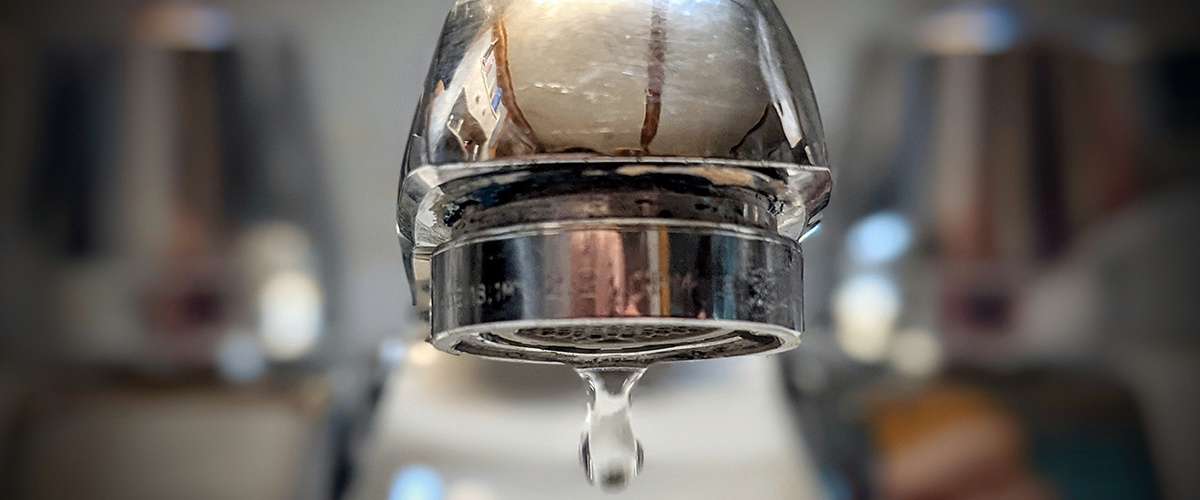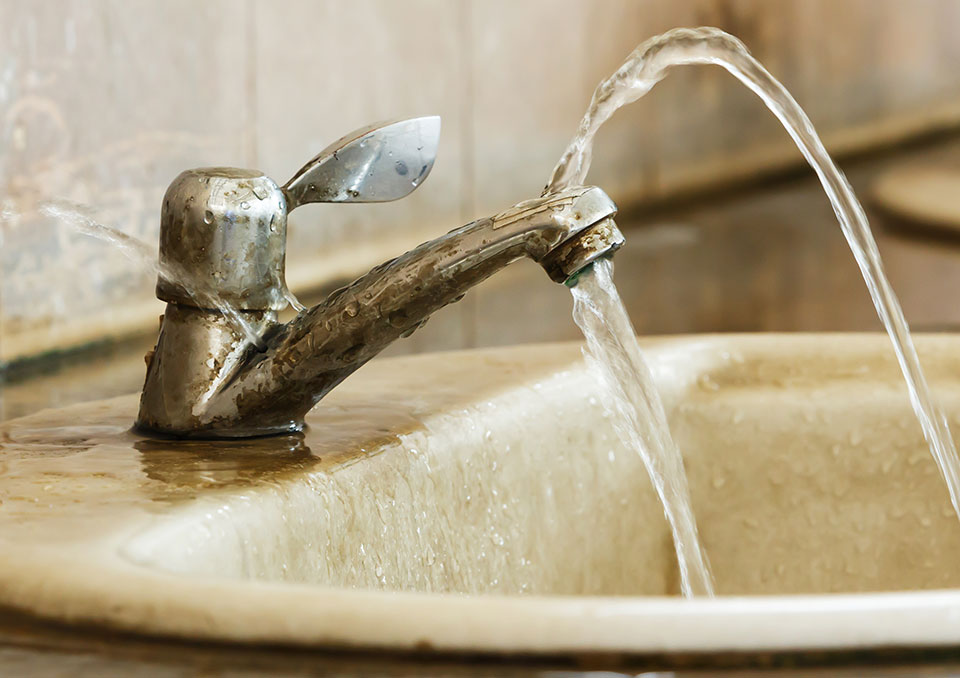How It's Essential to Rectify a Broken Faucet
How It's Essential to Rectify a Broken Faucet
Blog Article
How do you actually feel when it comes to Why Is It Important To Fix Your Leaking Tap/Faucet??

Trickling faucets might look like a small aggravation, yet their effect goes beyond simply the inconvenience of the sound. From wasting water to sustaining unneeded economic prices and health and wellness risks, neglecting a dripping tap can bring about various consequences. In this write-up, we'll delve into why it's critical to address this usual house issue promptly and effectively.
Wastage of Water
Ecological Influence
Leaking taps contribute considerably to water wastage. According to the Environmental Protection Agency (EPA), a solitary tap dripping at one drip per secondly can throw away greater than 3,000 gallons of water each year. This not only pressures water sources but additionally affects environments and wildlife based on them.
Step-by-Step Guide to Dealing With a Dripping Faucet
Devices Required
Prior to attempting to take care of a leaking tap, collect the necessary devices, consisting of an adjustable wrench, screwdrivers, substitute components (such as washers or cartridges), and plumber's tape.
Usual Faucet Issues and Their Solutions
Determine the sort of faucet and the details issue triggering the drip. Usual problems consist of worn-out washing machines, rusty shutoff seats, or faulty O-rings. Refer to producer directions or on-line tutorials for detailed advice on repair services.
Financial Costs
Increased Water Bills
Beyond the environmental impact, dripping taps can blow up water costs considerably. The collected waste in time translates into greater utility expenses, which can have been avoided with timely repair services.
Prospective Property Damage
Additionally, extended leaking can result in damage to components and surface areas surrounding the faucet. Water accumulation can cause staining, deterioration, and also structural problems if left ignored, resulting in extra repair expenses.
Health Worries
Mold And Mildew and Mildew Development
The consistent existence of dampness from a dripping faucet develops a perfect atmosphere for mold and mildew and mold growth. These fungis not only compromise indoor air high quality however additionally posture health dangers, specifically for people with respiratory system problems or allergic reactions.
Waterborne Conditions
Stationary water in trickling taps can come to be a breeding place for germs and various other microorganisms, enhancing the risk of waterborne diseases. Impurities such as Legionella microorganisms thrive in stationary water, potentially resulting in serious ailments when consumed or inhaled.
Do it yourself vs. Expert Repair work
Advantages and disadvantages of Do It Yourself Repair Service
While some may try to repair a trickling faucet themselves, DIY fixings come with their very own set of difficulties. Without proper understanding and devices, DIY efforts can aggravate the problem or bring about incomplete repair services, extending the issue.
Advantages of Hiring a Professional Plumber
Employing a specialist plumber ensures that the underlying source of the dripping faucet is attended to properly. Plumbers possess the know-how and tools to diagnose and repair faucet concerns efficiently, saving time and reducing the danger of additional damage.
Environmental Responsibility
Individual Contribution to Conservation
Taking responsibility for dealing with dripping taps straightens with more comprehensive initiatives towards water conservation and environmental sustainability. Every individual's activities jointly make a considerable impact on preserving priceless resources.
Sustainable Living Practices
By focusing on punctual repair services and embracing water-saving habits, people contribute to lasting living methods that benefit both existing and future generations.
Safety nets
Routine Maintenance Tips
To avoid dripping taps, perform routine upkeep such as cleaning up aerators, evaluating for leakages, and replacing worn-out components quickly. In addition, consider setting up water-saving tools or upgrading to a lot more efficient fixtures.
Value of Prompt Services
Dealing with leaking taps as quickly as they're noticed avoids more water wastefulness and potential damage, ultimately saving both water and money over time.
Effect On Residential Property Worth
Understanding of Well-Maintained Home
Preserving a building in good condition, consisting of resolving upkeep problems like dripping faucets, boosts its perceived value and worth among potential buyers or tenants.
Impact on Resale Value
Characteristics with well-maintained plumbing components, including faucets, command higher resale values in the realty market. Dealing with trickling taps can add to a favorable perception throughout residential property inspections and settlements.
Verdict
Addressing a dripping faucet goes beyond mere benefit; it's a crucial action towards conserving water, reducing financial costs, and securing health and wellness and building. Whether via do it yourself fixings or specialist help, acting to take care of trickling taps is a tiny yet impactful means to advertise liable stewardship of resources and contribute to a much healthier, a lot more lasting future.
How to Fix a Dripping or Leaky Faucet
A leaking faucet is one of the most common problems that homeowners encounter, but it being commonplace doesn’t make it any less annoying. The constant drip drip drip of a leaking bathtub faucet, showerhead, or sink tap can disturb your home’s serenity. Left neglected, a dripping faucet can also result in higher water bills and discoloration or mold growth in your sink or plumbing fixtures.
Fortunately, you don’t have to be a trained plumber to know how to stop a dripping faucet. With some basic tools, replacement parts, and a little patience, leaky faucet repair is a breeze. In this article, we’ll explain what causes dripping faucets and how you can fix them.
What Causes a Leaking Faucet?
Kitchen and bathroom faucets come in all manner of designs, but most involve some combination of valves, O-rings, seals, and washers. The O-ring is usually the weakest link, but any one of these pieces can wear down over time. Heat, moisture, temperature fluctuations, minerals, mold, and movement can contribute to warping and corrosion, breaking the watertight seal. This just comes with the territory of being a homeowner. Everything is always subject to wear and tear, and some component parts of your appliances and fixtures need to be replaced on occasion. At least replacement O-rings are cheap!
More rarely, dripping faucets can be a symptom of excessively high water pressure. Were this the case in your home, you would probably notice that the leak is not isolated to one faucet. Water pressure issues are harder to resolve on your own. We recommend contacting a professional plumber if you suspect your water pressure is too high.
How to Fix a Dripping Faucet
Pipe wrench or monkey wrench Allen wrench set Screwdrivers Old towel or rag Shut off the water.
Before you do anything, you need to turn off the water to keep from drenching your kitchen or bathroom. You should find a valve under the sink and against the wall. Once you’ve turned this valve, try turning the faucet on to confirm that the water source has been cut off.
If you can’t locate your local valve for the faucet you’re working on, you can always shut off the water to the house at the main valve. Of course, this will prohibit anyone from using the sinks, showers, or toilets while you’re working on the faucet that’s giving you trouble.
Plug or block the drain.
You’ll be disassembling the faucet and removing some small bits of hardware. Plug the drain with a stopper or rag to avoid the possibility of a small screw falling into your P-trap.
Take apart the faucet assembly.
There are several varieties of kitchen and bathroom faucets, each with its own manner of assembly. For detailed instructions on how to disassemble your faucet, you can refer to the fixture’s manual or contact the manufacturer. If you know whether you have a ball, disc, cartridge, or compression faucet, you can find detailed schematics online.
In general, you need to begin by removing the faucet handles. You might notice a small screw that you’ll need to remove with a screwdriver or Allen wrench. If you don’t see any visible securing hardware, it’s likely hidden under a decorative cap that can be unscrewed or popped off with flathead screwdriver.
Remove each piece methodically, consulting a schematic when necessary. Take notes or arrange the pieces in such a way to make it easier to correctly reassemble the faucet later.
Remove the cartridge.
Once you’ve removed the handles and securing hardware, you should be able to remove the valve cartridge or stem. Some cartridges will slide right out. Other faucet models will require you to loosen a nut with a pipe wrench before you can remove the valve stem.
Examine the exposed hardware.
With the cartridge or stem removed, inspect the component parts. Check the rubber O-rings for wear and tear. Also examine the seat washer for corrosion or other damage. These pieces are usually the responsible parties for a dripping faucet, but it’s worth inspecting the other component parts while you have the faucet disassembled.
Find replacement parts.
Once you’ve identified which faucet component has failed, find an identical replacement. Your local hardware store should have O-rings, seat washers, and other standard components in stock. If you have a luxury or uncommon faucet, you may have to contact the manufacturer for a replacement part.
It’s a good idea to take your old parts with you to the hardware store so you can compare them with the store’s inventory and be sure you’re purchasing the correct replacement.
Reassemble the faucet.
With your new parts in hand, reconstruct the faucet and handles. Don’t be tempted to overtighten screws or nuts. You might think this could create a better seal, but it can instead damage or bend a delicate part of the assembly and create a new problem for you.
Turn on the water and test the faucet.
The only thing left to do is test your work. Unplug the sink, turn the water back on, and try the faucet. Congratulate yourself on a job well done!
https://www.libertyhomeguard.com/how-to-fix-a-dripping-or-leaky-faucet/

I hope you enjoyed our excerpt on Should I Repair or Replace a Leaky Faucet?. Thanks for finding the time to read our short article. If you liked our blog posting please don't forget to share it. Kudos for your time. Return soon.
Report this page